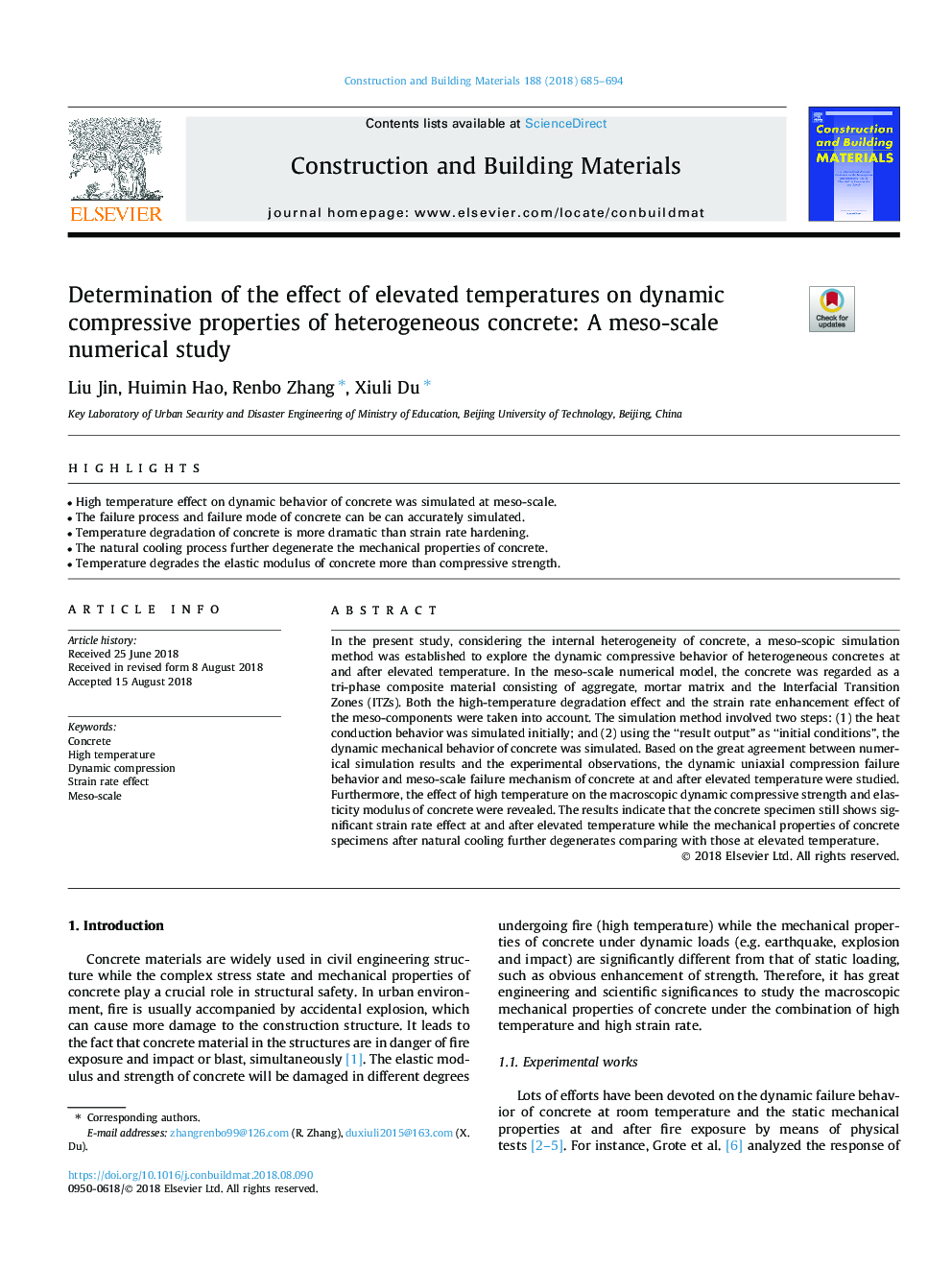| Article ID | Journal | Published Year | Pages | File Type |
|---|---|---|---|---|
| 10131818 | Construction and Building Materials | 2018 | 10 Pages |
Abstract
In the present study, considering the internal heterogeneity of concrete, a meso-scopic simulation method was established to explore the dynamic compressive behavior of heterogeneous concretes at and after elevated temperature. In the meso-scale numerical model, the concrete was regarded as a tri-phase composite material consisting of aggregate, mortar matrix and the Interfacial Transition Zones (ITZs). Both the high-temperature degradation effect and the strain rate enhancement effect of the meso-components were taken into account. The simulation method involved two steps: (1) the heat conduction behavior was simulated initially; and (2) using the “result output” as “initial conditions”, the dynamic mechanical behavior of concrete was simulated. Based on the great agreement between numerical simulation results and the experimental observations, the dynamic uniaxial compression failure behavior and meso-scale failure mechanism of concrete at and after elevated temperature were studied. Furthermore, the effect of high temperature on the macroscopic dynamic compressive strength and elasticity modulus of concrete were revealed. The results indicate that the concrete specimen still shows significant strain rate effect at and after elevated temperature while the mechanical properties of concrete specimens after natural cooling further degenerates comparing with those at elevated temperature.
Related Topics
Physical Sciences and Engineering
Engineering
Civil and Structural Engineering
Authors
Liu Jin, Huimin Hao, Renbo Zhang, Xiuli Du,
